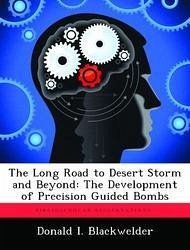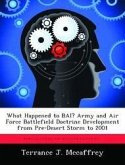This paper examines the long development of precision guided bombs to show that the accuracy attained in Desert Storm was an evolution not a revolution in aerial warfare. This evolution continues and gives offensive airpower the advantage over the defense. Guided bomb development started during World War One with the "aerial torpedo". During World War Two the German Fritz X and Hs-293 were visually guided bombs and both experienced success against allied shipping. The Army Air Corps also developed a wide variety of TV, heat, radar, and visually guided bombs. The visually guided AZON was successful in Burma and the radar guided Bat was successful against Japanese ships. During The Korean War visually guided RAZON and TARZON bombs had some success. In Vietnam the Paveway I laser-guided bombs and Walleye TV-guided bombs were successful on a much broader scale. Paveway II and III, Walleye II, and GBU-15s were developed and successfully combat tested throughout the 1970's and 1980's. When Desert Storm initiated in 1991 there were very few guided weapons that had not been extensively tested on training ranges and in combat. The precision demonstrated to the World during Desert Storm started evolving when airpower was first envisioned as a new dimension for conducting war, and was far from a revolution. Now, the continued development of imaging infrared, laser radar, synthetic aperture radar, and millimeter wave radar autonomous seekers further increases the flexibility, range, and effectiveness of guided bombs.
Hinweis: Dieser Artikel kann nur an eine deutsche Lieferadresse ausgeliefert werden.
Hinweis: Dieser Artikel kann nur an eine deutsche Lieferadresse ausgeliefert werden.








